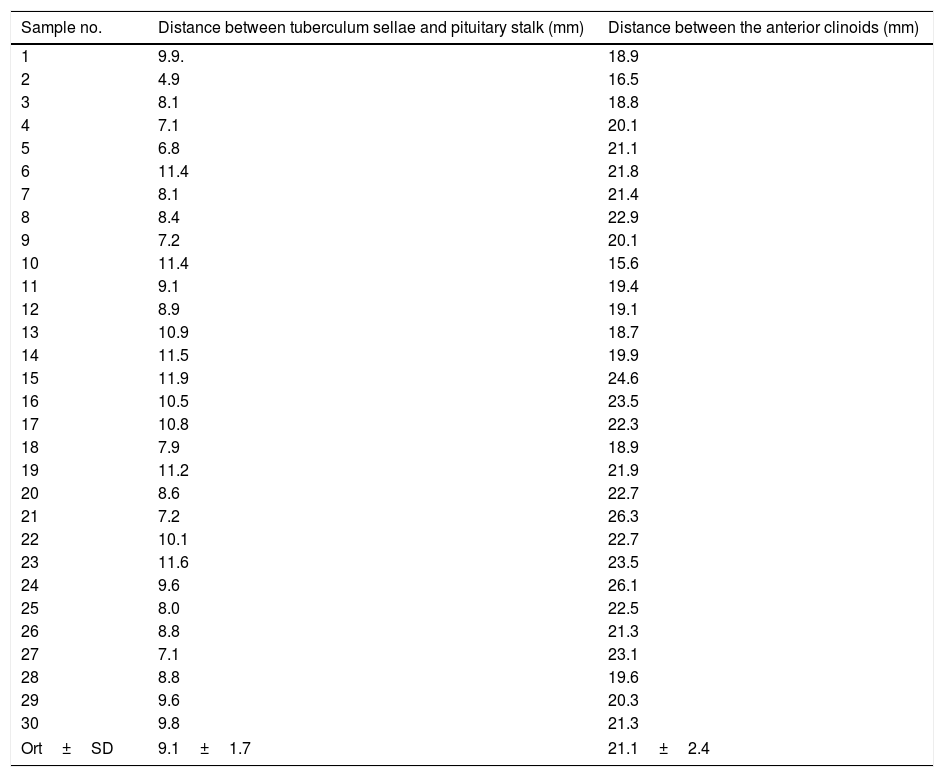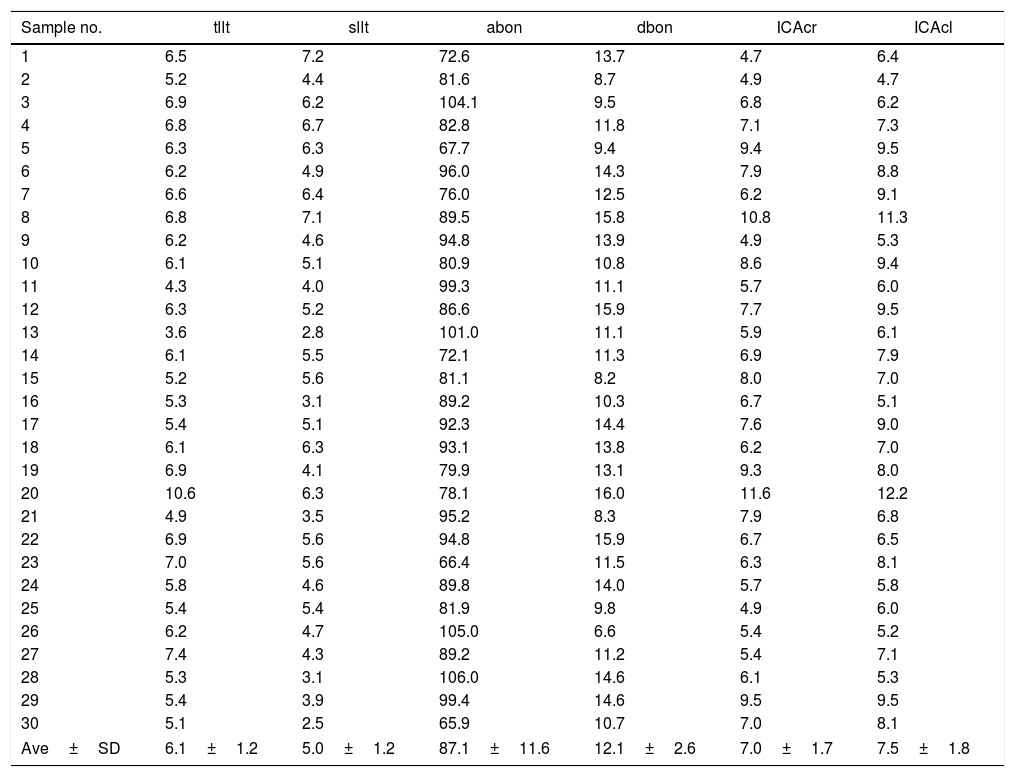Understanding the relationship between the carotid artery, optic nerve and the anterior clinoid process is the basis of surgical approaches performed in the subchiasmal region. The location of the optic chiasm, the length of the optic nerves, and the distance and angle between the optic nerves determine the route of surgical approaches. We have determined the types of optic chiasm to study the relationship between vascular and neural structures in this region.
Materials and methodsThirty autopsy specimens were investigated at the Bursa Forensic Medicine Institute for optic chiasm types and the relationship between the neural and vascular anatomical structures of the sellar–parasellar and subchiasmal region was examined between June 2016 and November 2016.
ResultsIn this study, 4 prefix types (13%), 6 postfix types (20%), and 20 central types (67%) of chiasm were defined. Furthermore, we measured this angle between two optic nerves, which indirectly shows the location of chiasm according to the diaphragma sellae, and then detected the mean value of this angle as 87.1±11.6°. The “limit” value to designate a chiasm as prefix was measured in the current study as ≥101.1°. The angle between optic nerves ranged from a mean value of 69.9±3.7° in 6 cases with postfix chiasm, to a mean value of 104.0±2.1° in 4 cases with prefix chiasm and a mean value of 88.8±6.7° in 20 cases with central chiasm.
ConclusionIn this study, we showed that the relationship among optic chiasma types, optic nerves and bony and vascular structures around the sellar area was effective at determining the surgical approach to this region.
Comprender la relación entre la arteria carótida, el nervio óptico y la apófisis clinoides anterior es la base de los tratamientos quirúrgicos realizados en la región subquiasmática. La ubicación del quiasma óptico, la longitud de los nervios ópticos, y la distancia y el ángulo entre dichos nervios determinan la vía de acceso quirúrgico. Hemos determinado los tipos de quiasma óptico para estudiar la relación entre las estructuras vasculares y neurales en esta región.
Materiales y métodosEntre junio y noviembre de 2016, se analizaron 30 muestras de autopsia en el Instituto de Medicina Legal de Bursa (Turquía) para determinar los tipos de quiasma óptico, y examinar la relación entre las estructuras anatómicas neurales y vasculares de las regiones selar-paraselar y subquiasmática.
ResultadosEn este estudio, se definieron 4 casos de quiasma prefijado (13%), 6 de quiasma posfijado (20%) y 20 de quiasma central (67%). Además, medimos el ángulo entre 2 nervios ópticos que muestra indirectamente la ubicación del quiasma según el diafragma selar, y luego detectamos el valor medio de este ángulo (87,1±11,6°). El valor «límite» para designar un quiasma como «prefijado» se midió en el estudio actual como ≥101,1°. El valor medio del ángulo entre los nervios ópticos osciló entre 69,9±3,7° en los 6 casos de quiasma posfijado, 104,0±2,1° en los 4 casos de quiasma prefijado y 88,8±6,7° en los 20 casos de quiasma central.
ConclusiónEn este estudio, pusimos de manifiesto que la relación entre los tipos de quiasma óptico, los nervios ópticos y las estructuras óseas y vasculares alrededor del área selar fue eficaz para determinar el acceso quirúrgico en esta región.
Article

If it is the first time you have accessed you can obtain your credentials by contacting Elsevier Spain in suscripciones@elsevier.com or by calling our Customer Service at902 88 87 40 if you are calling from Spain or at +34 932 418 800 (from 9 to 18h., GMT + 1) if you are calling outside of Spain.
If you already have your login data, please click here .
If you have forgotten your password you can you can recover it by clicking here and selecting the option ¿I have forgotten my password¿.












